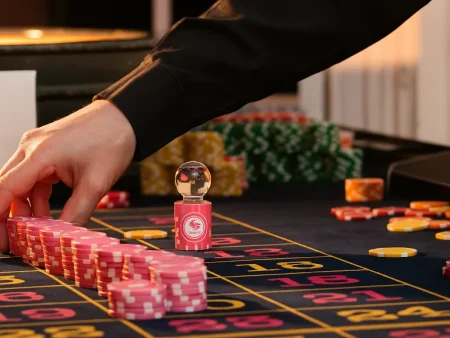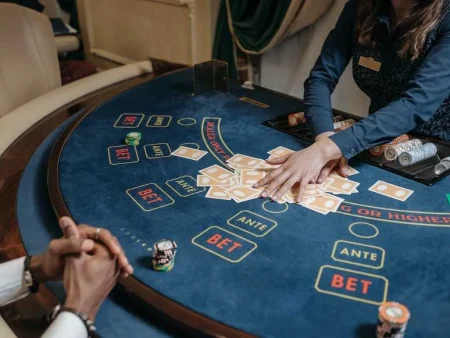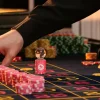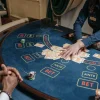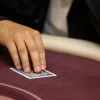Card counting has always been one of the most debated skills in the game of blackjack. Some players see it as a clever way to beat casinos, while others think it is too risky. It is not about magic or luck. Instead, it is about tracking the flow of cards in Blackjack to know when the odds favor you. A successful card counter does not just rely on memory but learns card counting through practice, patience, and plenty of time in casinos. To play Blackjack with an edge, you must understand how every card impacts the game.
What is Card Counting and How Does it Work?
Card counting in Blackjack is the process of keeping track of high cards and low cards as they leave the deck. When more low cards remain, the dealer has a stronger edge. When more high cards and an ace are left to be dealt, the player gains a chance to swing the game of Blackjack in their favor. To do this, players keep a running count in their head, adding and subtracting values as cards are dealt.
By using a true count conversion based on the number of decks remaining, a player can make better betting and playing decisions. Some systems even calculate the running count by the number of decks left in play, making the math more reliable. Counting does not promise instant wins, but it tilts the odds slightly in favor of the player who stays accurate.
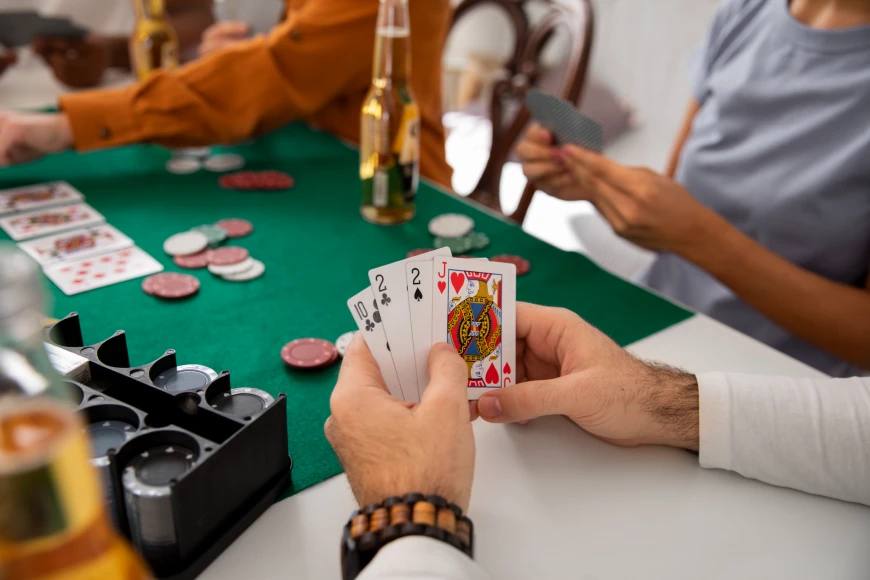
Best Top 10 Card Counting Strategies For Mastering Blackjack
There are many card counting systems that players can learn. Some are easy, designed for beginners, while others are complex and demand months of practice. Each system gives players a way to count cards in blackjack, track the strength of the deck, and make choices that could beat the game. Below are ten of the most used strategies, each with its own strengths.
1. Hi-Lo Strategy
The Hi-Lo system is the most popular way to learn card counting in blackjack. Each low card from 2 through 6 is worth plus one. Cards 7 through 9 are neutral, and high cards like 10 and ace are minus one. By keeping a running count, players know when the deck is favorable to them. This system is often taught first in any Blackjack apprenticeship or training course. It is easy to use, simple to memorize, and works across single-deck and multiple-deck play.
2. KO (Knock-Out) System
The KO system is similar to Hi-Lo but removes the need for a true count conversion. You simply track a single total as cards are dealt without adjusting for decks left. This makes it useful for beginners learning to count. While it is less precise than advanced strategies, it is easier to use in a real game of blackjack. Many people playing for the first time start with this method, since it allows them to focus on counting skills without too much math.
3. Omega II
Omega II is a balanced system with multiple values, such as plus two, plus one, minus one, and minus two. It requires more mental effort than simple systems but offers more accuracy. A counter would need to be practiced for weeks before being used in casinos. The payoff is that it works well across multiple decks, including 6-decks, where smaller systems may struggle. A successful card counter using Omega II must stay sharp and avoid mistakes, since even a single card missed can throw off the count.
4. Zen Count
Zen Count assigns different values to many cards, such as plus two for low cards and minus two for strong cards. It works well with both 1 deck and 6-decks. Many players prefer it because it balances accuracy with flexibility. The system blends smoothly with the true count method, giving players more confidence when they play Blackjack for real money. The challenge is that it requires steady practice to handle the extra detail without losing focus for a long time in casinos.
5. Wong Halves
Wong Halves is one of the most detailed counting strategies ever built. It uses fractions like plus 0.5 and minus 0.5, making it extremely precise. It was designed by Stanford Wong, a well-known figure in the true story of card counting. Because of its detail, the system is difficult to learn and apply in real time. Only players who dedicate months of practice and memorize every card value can use it while keeping up with a fast dealer and people playing around them.
6. Red Seven
The Red Seven system is easier to use than advanced options and works by giving plus one to low cards and also counting red sevens as plus one. This makes it an unbalanced system that skips true count conversion. Many beginners use it as a first step before moving to more advanced methods. It is simple to remember and useful in learning to count without stress. For casual players, it offers a friendly introduction to counting strategies without heavy math.
7. Halves
The Halves system uses fractions like plus 1.5 and minus 0.5, creating more detail in the running count. It is not easy at first, but once mastered, it becomes second nature. A counter would need strong card counting skills and comfort with numbers to use this system without errors. With practice, the Halves method gives players precise control over their bets as the count shifts. Many advanced players see it as one of the most accurate systems available.
8. Hi-Opt I and Hi-Opt II
The Hi-Opt systems are designed for accuracy. Hi-Opt I is easier to learn, while Hi-Opt II is more powerful but complex. Both systems are best for players who already know the perfect basic strategy and how to deviate from basic strategy when the count changes. These methods reward serious players who want to beat casinos in the long run. However, they take longer to master and are less common among beginners.
9. Kiss (I, II, and III)
The Kiss systems are simple, making them great for beginners or people currently playing with little experience. They use fewer values and easier math, which means less stress at the table. Many Blackjack apprenticeship programs teach these systems early on. Players can build confidence using Kiss before moving into more complex strategies. By starting small, they can learn how to count cards in Blackjack without fear of being overwhelmed.
10. 10-Count Strategy
The 10-Count strategy was created by Edward Thorp, the author who wrote about the true story of card counting. This system tracks the number of tens compared to non-tens left in the deck. It was one of the first counting systems ever used by a Blackjack team. Though less common today, it shows how simple math can still beat the game. The method is part of Blackjack history and is often used to explain the basics of how counting systems began.
The 5 Core Principles of Card Counting
Every card counting system stands on the same five core ideas. These principles guide all counting strategies and even appear in the behind-the-scenes card counting theories that experts teach in a training course.
1. Assign Point Values to Cards
Every system begins by assigning point values to each blackjack card. Low cards usually add plus points, while high cards subtract points. Middle cards often do nothing. Without these values, you cannot count or know how many cards are favorable to the player. This step is the foundation of every method and must be memorized before moving forward.
2. Track the Running Count
After learning values, players must keep a running count. Every card that comes out changes the number in your head. This step tells you whether high cards or low cards remain in the shoe. The more accurate you are at keeping a running count, the better your betting and playing decisions will be. Errors in this step often lead to big wins and losses.
3. Calculate the True Count
When you’re playing with multiple decks, the running count is not enough. To adjust, players divide the running count by the number of decks remaining. This creates the true count conversion, which levels the game across different situations. Without this step, the count can be misleading, especially when 6 decks are left in play.
4. Adjust Your Bets
Betting and playing decisions change when the count rises. A favorable count means bigger bets, while a negative count means smaller ones. Bets as the count improves are what give players a chance to beat the game. Without adjusting bets, counting is just numbers with no reward. A counter must be confident and consistent when making these moves.
5. Master Basic Strategy & Be Discreet
Even the best systems fail without knowing the perfect basic strategy. Successful card counting also means knowing when to deviate from basic strategy depending on the count. At the same time, discretion is key. Casinos never enjoy players who may have been counting, and a pit boss might step in if betting patterns stand out. Staying hidden is just as important as math.

What Makes a Successful Card Counter?
- Accuracy and Focus
Accuracy is the basis of successful card counting in blackjack. Every card matters, and even a single mistake can shift results. A counter would need sharp focus to avoid slipping when cards are dealt quickly or when distractions rise around the table.
- Discipline and Patience
Discipline separates hobby players from a successful card counter. Wins and losses will come in streaks, but patience keeps you from making bad choices. To beat casinos, you need to stick to the plan even when luck turns against you.
- Practice and Strategy Knowledge
Successful card counting is not just math. It means hours of learning to count, going through a training course, and understanding different counting strategies. Players practice until they can count in their head without stopping, even with many cards moving fast. In fact, history shows how a church team like the Holy Rollers proved that focus, discipline, and teamwork could make casinos for millions over time.
The Primary Risks of Card Counting
Card counting can improve your edge, but it comes with serious risks that every player must understand before sitting down at the table. Casinos never welcome players who may have been counting, and they use many ways to fight against it. From constant shuffling to close observation by a pit boss, the pressure is always there. Beyond casino actions, risks also come from inside. Fatigue, poor bankroll management, and small mistakes can ruin weeks of work. Knowing these dangers helps players weigh whether the reward is worth the risk.
Casino Countermeasures (heat, shuffling, banning)
Casinos never allow players to openly count cards, and their first defense is heavy surveillance. A pit boss often keeps a close eye on anyone who seems to change bet sizes too quickly. Dealers may shuffle more often when patterns are noticed, and repeat offenders risk being asked to leave. While card counting is not illegal, casino countermeasures can make it impossible to maintain an advantage over time.
Variance and Losing Streaks
Even a successful card counter will face losing streaks because variance is part of every game of blackjack. You might play perfectly and still lose many hands in a row. This reality makes bankroll swings stressful and difficult to manage. Without patience, players often panic and raise bets at the wrong time. Understanding that variance can wipe out short-term results is key to surviving long enough to let the math work.
Maintaining Accuracy
Card counting demands precision. A single card misread or forgotten can throw off the entire count and ruin decisions. Casinos are loud, distracting, and often designed to break your focus. Between bright lights, people playing at the table, and constant action, staying accurate is a real challenge. To succeed, players must practice counting until it becomes second nature, since even small errors can turn a favorable situation into costly mistakes.
Mental Fatigue
Sitting at a Blackjack table for hours while keeping a running count in your head can be exhausting. Mental fatigue builds slowly but affects accuracy, decision-making, and even the ability to hide your skills from staff. Unlike casual players, counters cannot relax between hands because every card matters. Fatigue can lead to missed counts, poor betting, and losses that undo hours of hard work. Managing energy is just as important as managing money.
Need for Discretion
Casinos are designed to spot unusual play, and players who act suspiciously attract unwanted attention. A card counter must blend in, betting smoothly and avoiding obvious patterns. Acting too confident, making sudden, large bets, or celebrating big wins can all alert staff. Discretion means controlling emotions, moving tables often, and never looking like you are there only to beat casinos. Without it, even the best counting strategies will fail quickly.
Loss of Enjoyment
Card counting changes the way you experience the game of blackjack. For casual players, Blackjack is fun, social, and sometimes lucky. For counters, every hand becomes math, memory, and pressure. Over time, the excitement of the game can fade. What was once enjoyable entertainment becomes serious work. Many counters eventually find that while they may win, the thrill of play is replaced by stress and routine.
Poor Bankroll Management
Even the most skilled counters can lose everything if they fail to manage money wisely. A proper bankroll is not just about having enough cash but about betting responsibly. Large bets placed at the wrong time can quickly drain funds. Many counters underestimate how big swings in wins and losses can be. Without strong bankroll management, players cannot survive the natural ups and downs of the game, no matter how accurate their count.
Top 5 Common Misconceptions About Counting Cards
Misunderstandings about card counting are everywhere. Movies and stories often make it look like a magic trick that guarantees money, but the reality is very different. These myths can confuse new players and make them avoid learning real counting strategies. Clearing up these misconceptions helps players see card counting for what it really is: a skill that offers a small but real edge when used properly. Even so, not every successful Blackjack player counts, and not all card counters make money consistently.
1. Card Counting is Illegal
A common belief is that card counting is against the law, but this is not true. Card counting in Blackjack is simply a way of using your mind to keep track of cards. Casinos dislike it because it gives players a small edge, so they may remove you or refuse service. That does not make it illegal. It only means you must stay discreet and understand your rights as a player.
2. It Guarantees Big Wins
Another myth is that counting cards guarantees you will walk out of the casino with stacks of cash. In truth, card counting only shifts the odds slightly in your favor. You will still face losing sessions, sometimes many in a row. The real advantage shows up slowly over thousands of hands. Counters who expect quick riches often give up too soon or blow their bankroll chasing wins that are not there.
3. You Need to be a Genius to do It
Some people believe only math geniuses can count cards, but that is not the case. Card counting is simple math, mostly adding and subtracting small numbers. Anyone can learn card counting with practice, patience, and discipline. What really matters is staying focused and avoiding mistakes under pressure. Ordinary players with dedication can become successful counters, proving it is more about effort than raw intelligence.
4. It Doesn’t Work Online
Many players assume they can use counting systems in online Blackjack games, but that rarely works. Most online casinos use software that reshuffles after every hand, which destroys the ability to track cards remaining in the deck. Some live dealer games allow limited counting, but frequent shuffles make it unreliable. Online play may be convenient, but real counting only works in casinos with physical cards.
5. You Can Count Cards Anywhere, Anytime
A final misconception is that you can apply counting to any gambling game, like roulette, poker, or slots. That is false. Card counting works only in the game of blackjack, where every card dealt changes the odds for future hands. You cannot track a roulette spin or a slot pull the same way. This limitation makes counting useful but also very specific to Blackjack tables.
The Mathematics Behind Card Counting
The math behind card counting is about tracking probability. Each time a card that favors the dealer comes out, the deck becomes stronger for the player. Each time a high card or ace is played, the odds shift back toward the house. By keeping a running count and converting it into a true count, players can calculate when the odds are favorable to the player. This small edge, when managed with patience and bankroll control, is what allows a Blackjack team or even a single player to beat casinos slowly over time.
FAQs
Does card counting work in all gambling games?
No, card counting works only in Blackjack because the odds change as cards are dealt. In games like roulette or slots, every spin is independent, and no cards remain to track. That is why people playing other games cannot apply these methods. The system relies on memory, math, and the flow of a deck of cards.
How do casinos know if you’re a card counter?
Casinos often look for strange betting and playing decisions. A pit boss may notice bigger bets when the count is high or when there are unusual changes from the basic strategy. Staff also track patterns over time. Even if you play perfectly, they may suspect you if your moves look too consistent with counting systems.
How to calculate true count card counting?
To calculate the true count, divide the running count by the number of decks remaining. This step adjusts the count so it works fairly across a single deck, six-decks, or other setups. Without true count conversion, numbers can be misleading. Accuracy here helps you make stronger betting decisions.
What bankroll is needed for card counting?
The bankroll needed depends on limits, the number of decks in play, and your goals. A player may need thousands of dollars to handle swings and avoid going broke during big wins and losses. Without strong bankroll management, even a skilled counter would not survive losing streaks.
How does card counting affect betting?
Card counting guides bets as the count changes. When the count is negative or low, you bet small. When the count rises and is favorable to the player, you make larger bets. This pattern helps you press the advantage while protecting your bankroll during cold streaks.
Can card counting work at online casinos?
Most online Blackjack games use software that reshuffles every round. That means every card dealt resets the deck, so counting does not work. Some live dealer games may allow a few hands of counting, but casinos often shuffle too often. This makes card counting online unreliable compared to real casinos.
